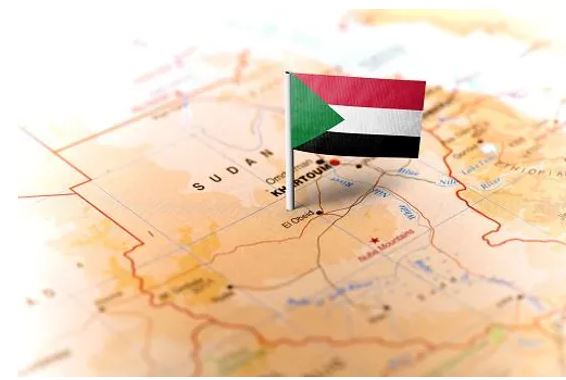Some Aspects of Cultural Relations between al-Maghrib and the Nilotic Sudan (15th-19th Century A.D)
14 September, 2014Khartoum (Sudanow) Going through the attempts of recording the Sudan history, one will find out that Professor Yusuf Fadl Hassan has long realized the importance of verification of the manuscripts from different copies and from eyewitnesses, narrators, elderly persons and grandsons of persons who have played a remarkable role in the history of the country. When he ventured to verify Tabaqat Wad Daifallah book, the Professor seemed confident that he was paving the way for a new era of maturity of a national concern with the Sudanese manuscripts in their multiple records and different epochs.
The Tabaqat experience put in motion the scientific activity in accelerated steps, but it is most likely that Professor Hassan’s unique endeavor was based on the concept that knowledge of the past of the ancestors and their cultural legacy is a basic launching pad towards a bright future.
Professor Hassan again took the difficult course and prepared an important book titled “Features of the Moroccan-Sudanese Cultural Relations from the 15th century to the 19th century”. In that book he traced the influence of the Moroccan scientific production, both jurisprudence and Sufi, on the Sudanese people.
Professor Hassan’s Work, of 80 medium-size pages, was widely covered by the Moroccan and Sudanese press and incited tweets, remarks and critiques on the electronic media.
The book, which was published by the African Studies Institute of the University of King Mohamed Fifth in Rabat, is considered a new chapter of the establishment of tolerance culture, especially as it has contained the text of a lecture that Professor Hassan so kindly delivered in the framework of the joint African legacy chair activity. Although the book covers a time period of 500 years on ties between two countries separated from each other by thousands of kilometers, Professor Hassan managed to reflect the political, cultural and social circumstances in which the predecessors of the two countries lived, demonstrating their remarkable ability of survival under those circumstances without relinquishing their basic values. He fluently depicted the media of education of that era (memory by heart, verbal instruction, writing poetry and poems in extolment of Mohammad The Prophet) and how recipients managed to skillfully absorb and master those literary, jurisprudent and linguistic fields of knowledge in a way that could not be mastered by many persons for whom the present modern media of education was made available.
Taking off from this prelude, we note that the book states that the Sudanese-Moroccan bonds are historically deep-rooted in ancient times and might have taken roots in history before the expansion of Islam in the Seventh Century. It is likely that the aborigines of the Maghreb Berber in North Africa resemble, in ethnicity and language, the Nubians and Bijah of the ancient populations of the Sudan of the Nile Valley. The book asserts that the Nubians and Berber belong to the black people of the Mediterranean while the languages of the Bijah and Berber take roots in the Kush group of languages.
However, the author concedes that the real contact began with the advent of Islam as in mid-seventh century the first Arab Islamic conquests reached Dongola in Sudan of the Nile Valley as well as the coast of the Atlantic Ocean.
The Islamic expansion in Africa opened a new chapter of the cultural relations between and their African neighbors, thus spreading Arabic language, the vessel of the Islamic faith, in Africa.

After this introduction, the book concludes that the Islamic civilization had, in a short while, extended its lofty shadows from Central Asia to the Bernese Mountains in Europe. That civilization had also influenced vast African territories.
The advent of Muslim influence had opened a new chapter in the relation between the Arabs and their African neighbours and had ushered in a qualitative turn in the Afro-Arab cultural interaction. Islam, had, by then, become the bed rock of Arab culture and Arabic had become the reservoir of the Muslim faith. The Arabic letters had, thus, become the symbol of that culture. In that context there appeared the terms: the Sudan and the Maghreb home lands (bilad al sudan walmaghreb).
Here appears the significance of this book that fills the gap in the recorded history of the Sudanese –Maghreb relations. That gap in recorded history was simply because of the weak communication between the two regions at the initial stage due to the fact that they were not geographically close to each other, even though they lived in one cultural framework represented in the Koran and Prophet Mohammad’s tradition (or Hdeeth).
That religious framework had lent the two entities a unity of character and orientation, regardless of the geographical distance.
The book elaborates on the cultural relations between the Nile Valley Sudan and the Maghreb in the light of the historical human and intellectual communication between them. That communication between the two regions was well demonstrated in the care given to Sudan by the Maghreb travelers who toured the Nile Valley Sudan and recorded their observations and impressions. It was further reflected in the Magharbi immigrations to the Nile Valley Sudan that created a visible Magharbi influence in the area.The Magharbi Moslem scholars had propagated the Maliki approach to the interpretation of the Moslem doctrine, the Quranic knowledge and the Quranic techniques of recitation {phonology}.
But the biggest communication could have been due to the spread of the Moslem sufi {mystic} orders and the movement of scholars between the two regions. It could be noted that Sufism in Sudan and the Maghreb had carried the same characteristics whereby preachers followed a special pattern in education and behavior based on piety, discretion and asceticism away from the pursue of fame. The Sudanese -Magharbi Sufism had, meanwhile, shunned scholastic and philosophical ideologies and its leaders had distanced themselves from politics, concentrating on the community and social reform. However, records did not cite but a single Sudanese sufi scholar who preached in the Maghreb, compared to scores of Magharbi scholars in Sudan. This could be due to the meager references on the matter in the Sudanese library.
Another indication of the Sudanese – Magharbi interaction is clear in the advent of Magharbi soldiers, employees and scholars to Sudan with the Turkish occupation of Sudan in 1820 and the following years .Those individuals had constituted the basis of cultural dialogue between the two areas. The messages of Imam Mohammed Ahmed Al Mahdi to the Magharbi political and intellectual leaders was also a striking indication of that dialogue. The advent and spread of Islam in Sudan and the Maghreb had constituted a fertile soil for the promotion of the Maliki approach to sharia’a interpretation. The spread of the Maliki approach and the diffuse of the Arab-Islamic culture in the two regions had led to the birth of a new generation of Berbers who carried the banner of Moslem and economic know how, thus signaling a new era in the unique Mgharbi Islamic culture, unique in that it was different from the culture of the East in terms of jurisprudence and creativity in the various aspects of knowledge, culture and the arts.
This had coincided with the recession of the Mashriq’s (East’s) influence , in particular after the immigration of the Fatimids Eastwards towards Egypt and the rise of the Berber governments in Tunis (the Ziriyeen), Algeria (the Hmadeyeen) and Morocco (the Murabiteen).The Murabiteen had scored tremendous religious and political success in Morocco, Andalusia, Sudan and the neighbouring regions during the 17th Century. This influence had spread down into Africa till it reached the Western coast and the boundaries of the Equatorial forest lands. The scientific position of the Maghreb was further cemented by what was carried by its scholars who frequented the scientific centres of the Islamic and Arab Mashriq (East) and also by the Moorskavians who fled Andalusia for fear of the Christian crusaders who rolled back the Moslem influence from that region..
Consequently, the Sudanese Western territories were influenced by those bright scientific successes. Those successes were reflected to Western Sudan by Maghreb traders who had had an effective contribution in the Saharan trade and, accordingly, the dissemination of the Maliki jurisprudence.
The Arab geographers had used the term ’Sudan’ to refer to all blacks or semi-blacks who inhabited the Savannah belt South of the Sahara and North of the Equatorial forest lands. That region is bordered by the Red Sea to the East and the Atlantic Ocean to the West. This (Sudan land) lies between latitudes 11 and 17 North. The ethnicities that inhabit this zone include the Bija, the Fur, the Zaghawa, the Barno, the Fulani, the Malians, the Singhi and the Takrours.
The spread of Islam had had deep effects on the souls of Sudanese and had, similarly , gripped the souls of immigrants to those regions. The enchantment with Islam had facilitated
the adoption of Sufi orders like the Gadriyya, the Shathyaliyya, and the Tijaniyya. Many Sudanese scholars had acquired their knowledge from Magharbi sources.
The book states that the influence of the Magharbi Arab – Islamic culture was so great that it looked as if it were a natural continuation of it, particularly in the Eastern districts of the Sudan.
The most outstanding of the Magharbi sufists was Sheikh Hamad Abu Thunnanana , an in-law of Sheikh Abdallah Ibn Mohammed Ibn Suleiman Al jizouli, the founder of the Shathali sufi order in Morocco. Abu Thunnana had settled down in Sagadi Village, west of Mahmiyya of the works of Shendi district. That was at a time when Christianity was receding, the Church on decline and the Arab exodus at its highest.
Sudan and the Maghreb did not, however, see an equal development in terms of the adoption of the Islamic-Arabic culture. The Maghreb was more influenced by that culture and more expressive of it. In addition to the Maghreb’s effective contribution to the Saharan trade, Magharbi scholars had the upper hand in the propagation of Sufi teachings and the establishment of schools of learning. That Magharbi influence had extended to the East and then to the West to knock the doors of the Hawsa nation and the Kanim Kingdom. Accordingly, the Central Sudan turned into a centre of trade exchange as well as an important point on the roads leading to Mecca and the Hajj (Pilgrimage).The Magharbi turn towards Sudan and Africa was further consolidated by the demise of the Moslem emirates in Andalusia that closed the doors from the Moslem influence in that region. That Magharbi turn towards Sudan had created a real cultural cohesion between Sudan and the Maghreb and established rich communication between the two regions. That era had, accordingly, seen a noteworthy movement in book writing and the recording of history. Accordingly, we have seen high-quality writings in all aspects of Islamic knowledge, similar to, if not better than those of the East.
This small book did indeed throw a big stone in the stagnant lake of our scientific production. It is important in that it depicts an important era in the history of our country and scholars.
What is new about this book is that Prof. Fadl is not concerned with mere theories of thought but tries to project the Sudanese entity in an earnest endeavour to answer the question: How can our contemporary thought call back and appreciate the mental aspects of the country’s heritage and re-employ this heritage to the maximum benefit.
End
MAS/ YH/ AS








